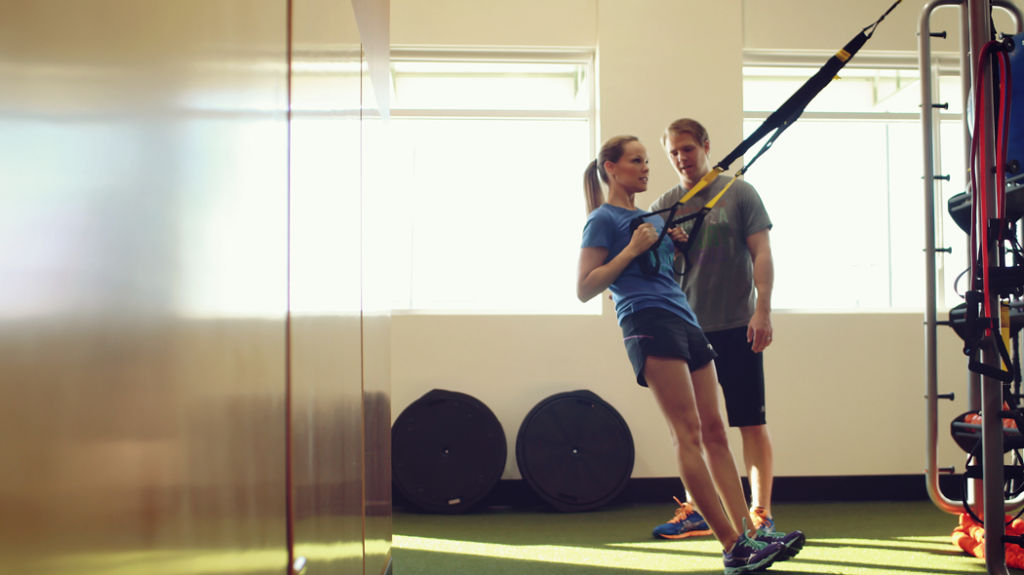If Monday is "International Chest Day" at gyms everywhere, Tuesday is "International Back and Biceps Day," given how common it is to use these muscles in combination in workouts. It might be a "muscle day." (Unfortunately, in keeping with the cliché, leg training will be postponed until Wednesday at the earliest, but I'll save that rant for another article.)
Back and Bicep Workouts to Build Muscles
There's no hard and fast rule that says you need to train your back and biceps together, but scientific anecdotes aside, combining these two muscle groups can give you a really hard workout. is logical.
Our guide to training your back and biceps together will show you how to create the most efficient upper body workouts that will build a thick back and toned arms.
Read also: How often should Jeff Nippard train abs?
Why train your back and biceps together?
"When you think about back training, whether it's rows, pulldowns or pull-ups, the second or third movement is the biceps," says the owner of So, For Efficiency, P.T., D.P.T. , says John Rusin, C.S.C.S. "Train the biceps more directly in combination with appropriate compound exercises" (i.e., train the biceps more directly, which involves multiple joints, as opposed to biceps exercises, which only train the biceps) movement). elbows are bent). Back and biceps training generally begins with rowing or pulldown exercises to work the large back muscles while fresh. It is best to save biceps exercises until you train your back, as starting your workout with bicep curls can make your arms so tired that they become ineffective enough to affect your back movement. It's reasonable.
One of the most popular and traditional training splits in all muscle sports is the push-pull split. This split trains your pushing muscles one day and your pulling muscles the next. For example, you can train your chest, shoulders, triceps, quadriceps, and calves on Monday, and your back, biceps, glutes, hamstrings, and rear deltoids on Tuesday. This type of schedule makes it easier to maintain a balance between all your workouts and ensures that you don't neglect muscle groups.
Of course, you don't have to train your entire body every day. You can do upper body presses one day, upper body pulls, also known as back and biceps, the next day, and legs later in the week. The back and biceps session easily adapts to any variation of the push-pull he split.

Anatomy of the back and biceps
The main muscles you need to train your back and biceps are:
Back
Latissimus dorsi (also called "latis dorsi"). These are large layers of muscles that run along the sides of your back and allow you to pull your arms down and behind you.
Major Telles. A small muscle located under the shoulder that helps pull the arm down and back.
rhomboids. Upper back muscles that lift, retract, and rotate the shoulder blades downwards. middle and lower trapezius muscles (“traps”); These guys pull the shoulder blades back and push them down.
Also read: 10 Best Chest Exercises for 2024
Biceps
Biceps: The main muscle of the biceps. Rotate your wrist outward (supinate) and bend your elbow.
 Brachialis: Located on the outside of the arm between the biceps and triceps. It makes you bend your elbows.
*When talking about "back training" in the strength and conditioning world, experts are usually referring to the upper back. The lower back, or erector spinae muscles, are considered part of the core muscles and are also heavily involved in leg exercises such as deadlifts and squats. Of course, you can include lower back training in your back and biceps training if you wish, but be sure to consider the stress placed on this area by other exercises and be careful not to overuse it.
Best back and biceps exercises
Back and biceps exercises can be divided into different categories. There are 3 types of back exercises and 5 types of biceps exercises.
Back
1. Horizontal drag (row).
To understand how the back exercise categories work, imagine your body standing. When you pull something toward the center of your body, it moves along a horizontal plane. All exercises performed at this level are a form of rowing. These include seated cable rowing, face pull rowing, and one-arm dumbbell rowing. Even if it means changing the position of your upper body, such as bending your hips back, do it. You're still pulling toward your body as if you were standing upright so that your torso is parallel to the floor (like a barbell bend row), and this exercise is still classified as a horizontal pull.
"Rowing should make up the majority of your back training volume," says Ruthin. "When rowing with dumbbells or handles, you can rotate your hands to achieve a more externally rotated position (thumbs facing away from you) at the top of the pull, which is not possible with pulldowns or pullups. Our shoulders need to turn inward, and we already do that enough in our daily lives when we drive, write text messages, and type. Our training is You should aim to get out of that state, which is why I prescribe more horizontal pull than vertical pull.”
Muscles Targeted: Rowing effectively works important back muscles such as the lats, teres major, rhomboids, and trapezius. Especially when he develops the latter two, his back becomes thicker and more fleshy.
Exercise variations: bent-over barbell row, one-arm dumbbell row, bodyweight row (using a suspension trainer or barbell in a power rack or Smith machine), seated cable row, T-bar row, mine row, meadow row. Trap bar rowing, chest support rowing, machine rowing (plate loading, selective, Smith machine), Pendley rowing. 2. Vertical pull-ups (chin-ups/chin-ups, lat pulldowns)
Vertical dragging is a little easier to imagine than horizontal dragging. Pulling up straight or pulling the bar down to hit the bar is called a vertical pull exercise, which includes many variations of pull-ups and lat pulldowns.
Read also: Is it too late to start weight training at 50?
2. Vertical pulls (pullups/chinups, lat pulldowns)
Vertical dragging is a little easier to imagine than horizontal dragging. Pulling up straight or pulling the bar down to hit the bar is called a vertical pull exercise, which includes many variations of pull-ups and lat pulldowns.
Muscles targeted: Latissimus dorsi pull-ups and pull-ups emphasize the upper latissimus dorsi and upper teres major, increasing the width of your upper back.
Exercise variations: wide-grip lat pulldown, neutral-grip lat pulldown, reverse-grip lat pulldown, wide-grip pullup, neutral-grip pullup, pull-up, assisted pull-up, or pull-up (using a machine or band).
3. Isolation exercises (straight-arm pulldowns and pullovers).
Horizontal and vertical pulls are always compound exercises that use the biceps as an auxiliary movement, whereas exercises such as straight-arm pulls and pullovers require that the elbows remain in a fixed position the entire time they are held. , strain on the biceps muscles is virtually eliminated. This allows you to train your lats and various muscles in your upper back more directly, allowing you to work your muscles without assistance. "These exercises require you to use lighter weights. However, these isolation exercises tend to increase the mind-muscle connection." This means your concentration is more easily focused on the muscles you want to train. It means you can. Increase their growth potential.
Read also: Time Under Tension Workouts: Are They More Effective?



.webp)



